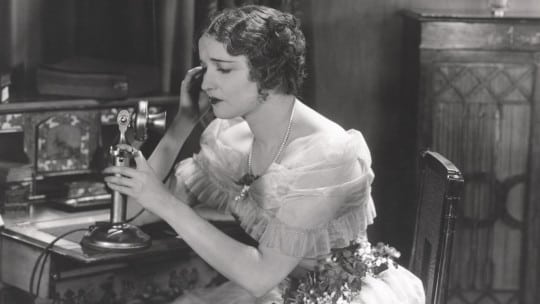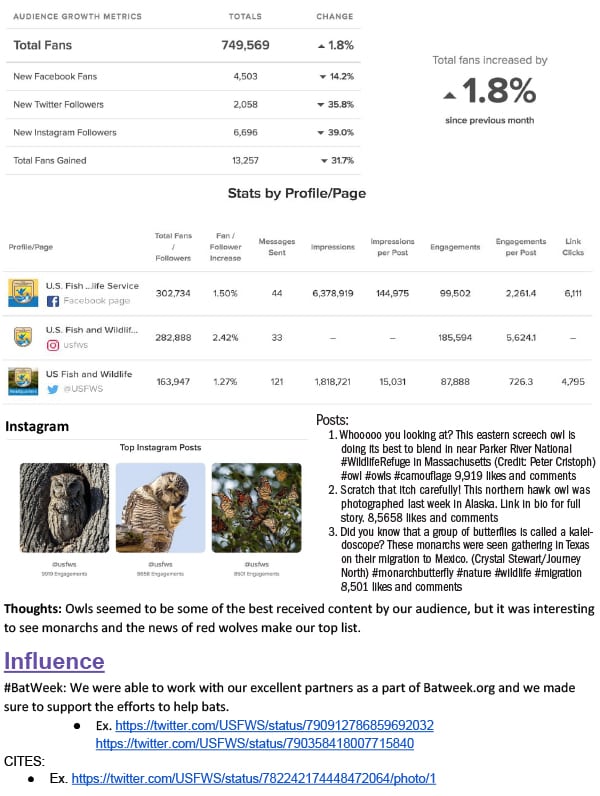
U.S. Army General Creighton Abrams (1914-1974) said the best way to eat an elephant “is one bite at a time.” As we talk to communicators, we find few problems larger than PR measurement. The issues with measurement seem so elephantine that it becomes an afterthought or worse. Some 20% of PR pros shun measurement entirely, a Nasdaq- PR News survey showed (PRN, Aug. 3, 2015). 35% of respondents said they spend just one hour per week on measurement. Most non-measurers attribute their 'measurement-itis' to a lack of resources and time as well as the complexity of tools. Our retort is to begin with digestible bites of the measurement elephant. Staying in the animal kingdom, we asked Danielle Brigida, national social media manager, U.S. Fish and Wildlife Service (USFWS), and a longtime measurement advocate, to get granular with us. We asked how and what she measures, and how she reports her findings.
Why She Measures
Brigida spends much time looking at what drives people to the USFWS and what they’re asking once they arrive. Is it the government agency’s social media content, including its campaigns? A search of its website? “We work on a lot of issues, [many of them complex,] and when I first got here, it took me a while to figure out how we could best measure digital engagement. I didn’t want to measure vanity metrics, but I wanted to measure, so that it helped strengthen our work.”
Certainly she looks for posts that resonate, but she’s also using data to learn “what to do next time” with content. “That’s what keeps the data actionable,” she says. For example, “we’ll roll something out and find [in comments and response figures] that it was confusing…so we’ll need to backtrack, add a table next time, maybe” or tweak the language.
What She Presents

Brigida insists her presentation is basic: She generates a monthly report in Google Docs that includes analytics from the Service’s blog and social media [see a sample below]. She pulls graphs from Sprout Social, analytics from Google Analytics and some in-platform analytics, such as Medium. She’s an advocate of creating “your own report…even if you don’t have a ton of time” to devote to measurement. You tend to learn more than just generating a purely automated report, she says.
For example, she’ll pull “all the posts we’ve done for the month and share the top posts, so people have a baseline” about what’s resonating. She’ll also provide one- or two-sentence analyses about those posts, providing commentary about how each platform is working.
Campaign Metrics, Lessons Learned
As noted above, she also measures USFWS campaigns. “By measuring what resonates and applying that to what we hope to accomplish, we save ourselves from guessing too much.” She also uses search analytics to help write social media posts and is trying to integrate search analytics more each month into her report as they can indicate national trends.
Qualitative information is also included in her monthly, which is circulated internally. For example, when USFWS helps answer a follower’s question about wildlife, it’s tagged in a Power of Commenting folder, and sometimes is included in Brigida’s report. “It shows us being a resource,” she says.
For Brigida and her colleagues, deciding what to measure can be tricky since many people within USFWS do social media. It takes collaboration to make measurement decisions, she says. “What I’ve found works the best is before a campaign starts, sit down and determine what metrics matter, as a group. Set priorities. Then you regroup after...and see how you’ve done.” She’s “always tweaking the way we measure.”
One of the things she’s most proud of, and is a corollary of this integrative approach, is the formation of a public engagement group, which brings together “social media, media outreach” and others. The group helps spot trends.
Mini-Case Study: “I do a lot of listening. I use a combination of Facebook Lists, TweetDeck and Feedly.” She noticed a lot of people were interacting about USFWS’ wildlife refuges (it manages some 565 of them). “In terms of listening, I’ll also look at Instagram and see where the refuges are that people are mentioning and I’ll try to see if any trends apply.”
Mini-Case Study: “I noticed a lot of people on Facebook were mentioning they’d rescued turtles. It was anecdotal to start, but I posted about it and there were about 30K shares.” After measuring comments and photos shared, “I realized there were not only a lot of shares, but a lot of participation and engagement. So we began providing resources” to assist people who wanted to save turtles. A similar case arose with ivory. It resulted in a USFWS ivory web page.
CONTACT: @starfocus
Note: Brigida will speak at PRNews’ Measurement Conference and Social Media Boot Camp, April 20-21, in Washington, D.C. For more information: http://bit.ly/2mytgRI
Useful Mix: USFWS’ Measurement Report
Below are excerpts from a monthly social media measurement report that Danielle Brigida, national social media manager, U.S. Fish and Wildlife Service (USFWS), created last year. As the story on pages 1 and 3 indicates, the report includes a monthly comparison of platforms (top), statistics by page, top Instagram posts, analysis and information about and links to USFWS campaigns (bottom).

